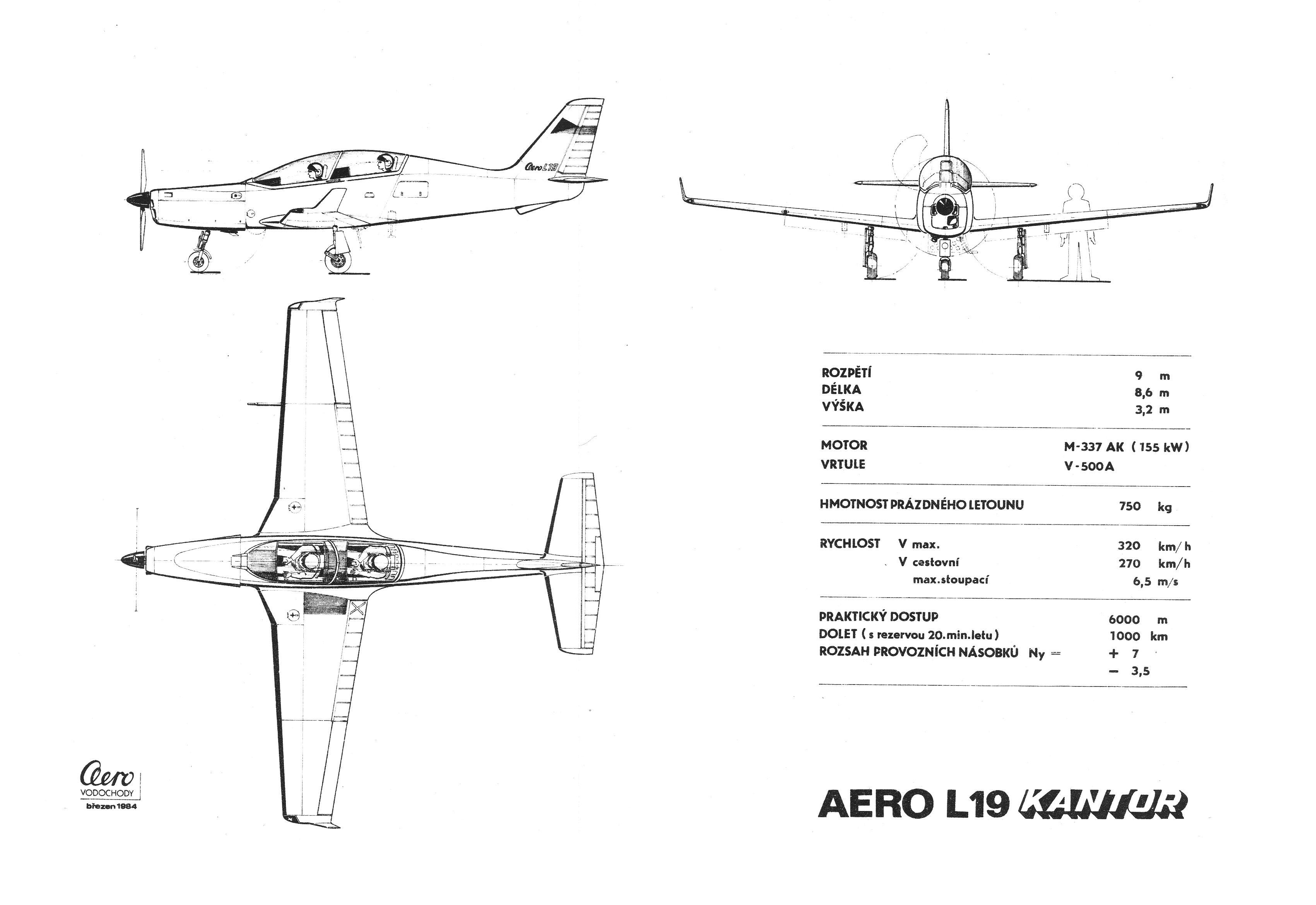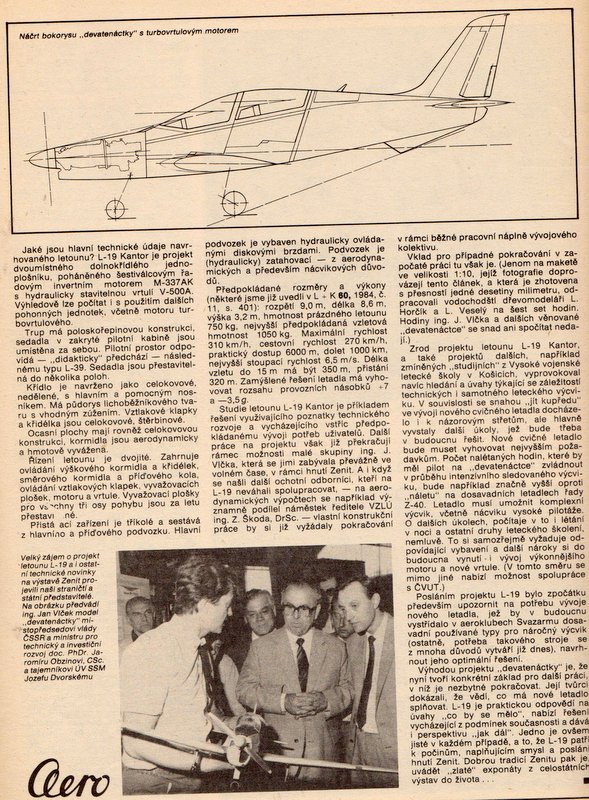History of L-19 Kantor
I will try to provide all the information I have gathered on the original L-19 project. The following figures are freely available on the web, I just put them on this site for a complete overview.
Therefore, should I offended the original authors, by publishing without permission, I apologize. Again, the pictures are available on multiple web pages anyway.

Traditional Czech aeronautical magazine L+K has published an article about this project back in mid 1980s. The contributing author is mr. Jan Brdovský.
The article introduces us to the situation in Czech aviation business of these days. The production of L-39 jet trainers was reaching its peak. And young engineers and technicians in Aero Vodochody were thinking about an airplane that would fill the gap in training organization. The main goals were set as follows:
- economical fuel consumptions,
- low maintenance cost,
- high reliability,
- long airframe durability (20+ years of service),
- local building materials and equipment.
As the engineers behind this project were employed in Aero Vodochody, the resources and know-how was mainly based on the current program: L-39 Albatros. Some similarities are clearly visible, especially in the tail unit. More similarities are hidden inside: structurally the L-19 shared very similar features as the L-39 (wing-fuselage attachment for example).
Technical description
L-19 Kantor is a full metal, single engine, two seat training airplane. The intended propulsion unit is M-337AK (155kW) piston engine with Avia V-500A propeller. Two pilots are sitting in tandem inside a closed cockpit.
The length of the fuselage is 9m, height is 3,2m and wing span 8,6m. The vNE=320km/h=173KTS and climb rate is vZmax=6,5m/s=1280ft/min. Service sealing is 6000m=20000ft, range 1000km=540NM.

Structural description
The wing has two spars across the wing span. These two spars are attached to the fuselage at four anchoring points. There are smaller spars in the leading edge with their own anchoring points to the fuselage.
Skin panels between the two continuous spars are strengthened by stringers. The cavity between the spars is used for retractable undercarriage and fuel tanks (3 rubber bags in each wing).
Horizontal tail has two spars, the rear spar is continuous with four hinges for the elevator and one anchoring point to the fuselage. The front spar is divided in two parts with two anchoring points.
Fuselage itself is a shell structure with bulkheads and 4 main beams. An engine mount is attached on 4 anchoring points on the firewall.
Aerodynamic description
The wing is double trapeziod with straith quoter line. Root airfoil would probably be the MS 317 whereas the tip airfoil MS 313.



